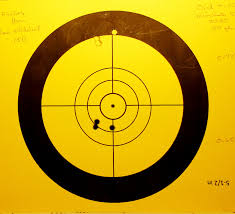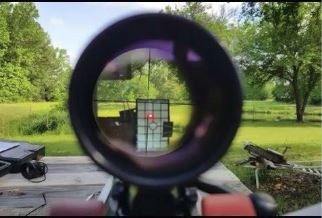A rifle scope is a must-have if you want to shoot with long range accuracy. Installing and learning how to sight a rifle scope requires some technical understanding, but if you follow these basic steps, even a beginner can learn to use this valuable shooting accessory.
To get the most accurate shots on the range and in the field, sighting your scope is the only way to shoot. Sighting can sometimes be a difficult and time-consuming process, but it doesn't have to be. We'll show you how to sight in a rifle and zero it in a few easy steps.
- MAKE SURE YOUR SCOPE IS INSTALLED PROPERLY
Most modern rifles are equipped with a mounting system for a scope. Whether your rifle has pre-drilled and tapped holes for scope bases or has a grooved rail system such as the Weaver and Picatinny rail systems, you will want to make sure that your scope mount and rings are a proper fit for your style of rifle. Certain types of scope rings fit only certain types of scope bases. It is important that these components match.
-
ADJUST EYE DISTANCE
Get your eyepiece situated in such a way that you see a clear, distinct image. Fine tuning the scope and creating the perfect amount of eye relief – the distance between the end of the scope and your eye is a key component to sighting your rifle scope. You will need to make sure that the distance between your eye and the scope is far enough so that upon firing a shot the recoil doesn’t send the scope back far enough to make contact with your eye - causing serious injury. We call this “Getting Scoped.
-
GET LEVEL
In order to properly sight your rifle’s scope your will need a stable shooting position. You can choose to position your rifle on a shooting bench with a mount, or use a bipod. Either method can work to achieve the desired result; however, a rifle mount can reduce the recoil up to 95% while securely holding your rifle on its target.There are many types of rifle mounts available in various price ranges that are specifically designed for scope sighting.
-
ALIGNING THE RETICLE
Most shooters do not take the alignment of their recticle into consideration when zeroing in their scope. When the crosshairs of your scope are not perfectly aligned to the directions of the elevation and windage adjustments, this is referred to as "Recticle Cant." A canted recticle can cause your shots to miss right or left of the target. Especially when engaging a target at a distance of 250 yards or more.

-
SETTING YOUR MOA (MINUTE OF ANGLE)
Setting your zero is a multi-step process. You may find it easiest to do at an outdoor shooting range, since you will need targets set at multiple distances - at least 100 yards. You will also need a mount to keep your rifle stable.
Most rifle scopes will then allow you to adjust the crosshairs in ¼ MOA (minute of angle) increments. This equates to ¼” of movement per click when sighting in at 100 yards. Most hunters use 1/8 inch and the 1/4 inch MOA click value.
In order to make the bullet impact move one inch or one MOA at 100 yards, you must turn the elevation, or the windage knob, four clicks. The click value moves up by a 1/4 inch for each 100-yard increase in distance.
Here is an incremental list of movement per click of elevation or windage knob on your rifle scope for various distances:
- 200 yards = 1/2 in.
- 300 yards = 3/4 in.
- 400 yards = 1 in.
- 500 yards = 1 1/4 in.
- 600 yards = 1 1/2 in.
- 700 yards = 1 3/4 in.
- 800 yards = 2 in.

-
FIRE THREE-SHOT GROUPS
Fire three-shot groups then take note of where these groups land on the target. Depending on the application, you may want to sight in slightly high at 100 yards and shoot dead center on at 200 yards. The choice is yours. Knowing your MOA will allow you to adjust to targets at different distances.

In Conclusion
Try out different distances and repeat until you are able to consistently hit grouped shots very close to the bullseye. After you master that, you can work on hitting targets that are further away – keeping in mind that you’ll need to factor in not only the rifle scope and distance to the target, but also environmental variables like wind. Installing and sighting a rifle scope is an important skill for a sharpshooter to develop, and if you follow the basic steps outlined here, you will gain the confidence to continue to develop your target shooting skills.

